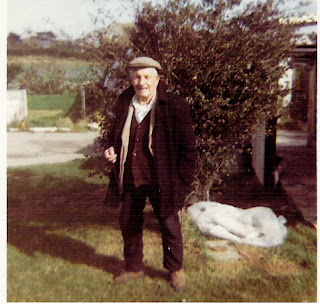And Then The Stone Room

One day, during the restoration period, Sarah found John in a state of concussion as he had fallen from a ladder and had no idea what day of the week it was. This was the day before we were due to set of to the Scottish Highlands for a walking holiday. Surprise, not all campsite owners wiz off to sunny climes in the winter! Some, perhaps misguidedly, spend the winter either up a ladder or up a mountain in the snow walking in unforgiving territory. Fortunately he recovered to enjoy the freezing conditions near Aberdeen When the builders had finished installing the internal facilities of the restored Nissen Hut, Sarah and John said ‘Goodbye see you around’ ‘ No,’ they pleaded, we don’t want to see anything ROUND for a very long time. The Stone Banker Room No, this is not where the piles of money are stored. Some campers fantasise about the life of the campsite owner. A common fantasy is that they jet off to sunny climes when the season is over. The reality, most often is, t...





